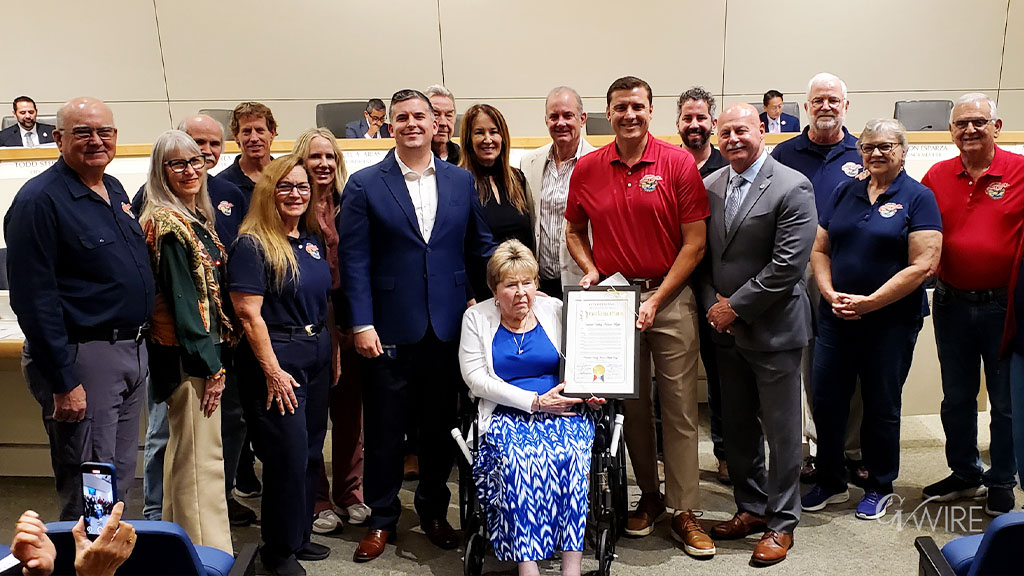
- Fresno Unified made small gains on English and math standardized testing but the district is still far from meeting the standards.
- Interim Superintendent Misty Her directed staffers to provide data reports for teachers to have on hand for start of school year.
- The district is focusing resources and support on three "intensity areas:" grades 3 and 9 and a middle school pilot project that's TBA.
Share
|
Getting your Trinity Audio player ready...
|
Fresno Unified students had small improvements in English and math scores in last spring’s state standardized testing, according to a district report on Wednesday’s School Board agenda.

“That transition period from eighth grade to ninth grade is really difficult for them. And so what we’re trying to do is, we get to every single ninth grader so that we get them on track by the time they’re done with us in ninth grade.” — FUSD interim Superintendent Misty Her
But interim Superintendent Misty Her told GV Wire that the district is wasting no time in using the data to focus on meeting students’ needs.
The percentage of students who met or exceeded standards on the Smarter Balanced Assessment Consortium English language testing climbed from 33.2% in 2023 to 34.7% last spring. The percentage of students meeting or exceeding standards on math testing climbed from 23.3% in 2023 to 25.1% last spring, the district reported.
Even with the gains, the district is still 49.1 points below standard in English testing and 78.1 points below standard in math testing.
Her Wants Fast Start for Achievement Plan
Her said that although she had hoped for bigger increases, she was not entirely surprised at the outcomes. The district’s Literacy Initiative is targeting students in preschool through first grade, but state assessments test only students in grades three through eight and grade 11. So the impact of the district’s literacy efforts should be apparent in future assessment testing, she said.
Her said she decided to release the district’s scores ahead of the state’s release in September.
“As soon as our AMA (Analysis, Measurement and Accountability) or, our data team says, ‘you know what? This data is good,’ then I’m like, well, let’s share it. Because if we wait for the state, then it will be in September. That’s too late for me,” she said.
Getting Data to Teachers Sooner
Her said she wanted to have data in the hands of classroom teachers, principals, and administrators starting on the first day of school. This year assessment results will be broken down by region, school, teacher, and student, she said.
While data was available in the past, it wasn’t shared consistently, Her said: “It’s been like, ‘Oh this person in this department helps me a lot. So they created this report for me.’
“What I did is, I just said, create the reports and give it to everybody. Put it in everybody’s hands.”
Having access to the data sooner means teachers can customize instruction more readily to each student’s needs, Her said. For example, when her husband went last week to the open house at their son’s high school, the teachers had information at hand that they can use to jumpstart students’ education, she said.
“His English teacher was able to tell my husband, ‘Hey, these are the areas that he’s strong in, these are the areas he’s weak in. I looked at how he’s doing, and this is what I can do to help him.'”
Elementary school principals were meeting Monday to review data and determine where the district’s success stories are, and then figure out to replicate them districtwide, she said.
Focusing on ‘Intensity Areas’
Her said she’s identified three “intensity areas” for the new school years: third grade, a to-be-named middle school pilot project, and ninth grade.
“The reason for third grade is one, when we looked at our data, we saw that there were some really promising practices that were happening in third grade where we actually have teachers that were like 90% proficiency or 80% or 70%. We started to see a pattern of really strong places that were in third grade,” she said.
“And then the other thing that we saw was that we’re now going into year two of implementing the Every Child is a Reader Literacy Initiative. And so with all the investment that we’re putting into preschool, T.K., kinder, and first, we should start to see that now cross over into second and third grade.”
Ninth grade is another “intensity area” where the district will focus resources and support, because that’s the year that the greatest percentage of high school students drop out, Her said.
“That transition period from eighth grade to ninth grade is really difficult for them,” she said. “And so what we’re trying to do is, we get to every single ninth grader so that we get them on track by the time they’re done with us in ninth grade.”
Middle school and district officials are in the process of determining the specifics for the middle school project, but it could involve how teachers use interim assessments, she said.
RELATED TOPICS:
Categories

Fresno Launching Neighborhood Repaving Project Monday



















